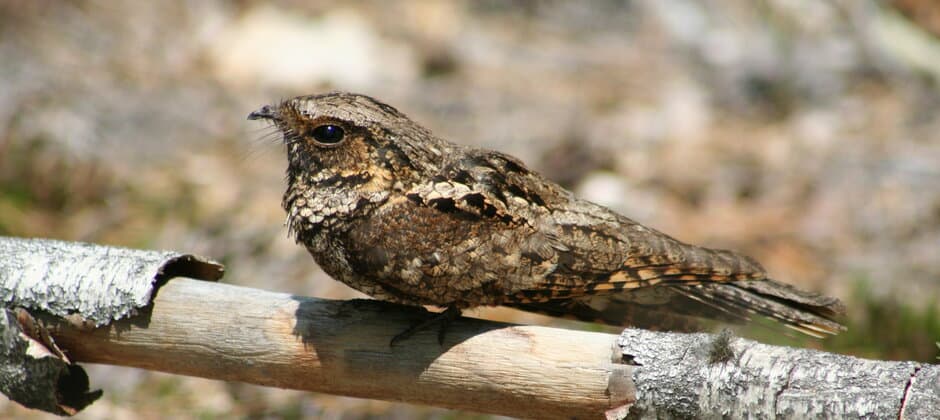Share this article
JWM: Whip-poor-wills prefer mixed forestry
The secret to the perfect forest types for eastern whip-poor-wills is having a good mix.
The small, well-camouflaged birds prefer forests that have a mixture of open spaces and closed canopy areas to mature forests or clear-cut openings, researchers found.
“In a lot of cases, we’re finding that forests are homogenous in terms of age structure are missing some key species like whip-poor-wills” said David King, a research wildlife biologist with the U.S. Forest Service and adjunct professor at the University of Massachusetts Amherst.
In fact, whip‐poor‐wills (Antrostomus vociferous) have seen a 50% range contraction in the past few decades, King said. The birds have been identified as a species of greatest concern in 32 states as a result of these declines.
King and his graduate student Kimberly Spiller had been approached by the Fort Drum military reservation, which wanted to learn more about whether their forest management was well-suited to conservation for the birds in upper New York State near Watertown. The researchers set out to determine what forestry regimes worked best for the birds.
In a study published in the Journal of Wildlife Management, the researchers gathered information from areas around Fort Drum characterized by different types of forest, from clear-cut areas to closed-canopy, mature forests. In 2015 and 2016, they surveyed the birds using point counts and measured the vegetation.
They analyzed the results, calculating the probability of whip-poor-will presence in relation to canopy openness.
The team found that the birds were most commonly found in forests with intermediate levels of management intensity, where some trees had been removed but others were left standing, conditions that correspond to “shelterwood” harvests. These areas had about 60 square feet of trees per acre of forest.
King said that this type of management encourages for more diverse vegetation, with tall trees but also plenty of lower shrubs.
The relatively shaded areas help trees regenerate that would do poorly in direct sun. “If you were to stand in the shelterwood stands, there would be some canopy trees, but also a glade-like feel,” King said.
The age structure of many forests in the U.S. is homogenous since trees recover and grow at the same time after clear-cuts or when farms are abandoned.
But managed forests likely benefit whip-poor-wills and other species because of their diverse age structure. This may mimic forests under natural conditions, where forests would have a mixture of open patches and covered canopy as older trees die and fall down or get blown over.
These diversely structured forests likely also benefit species of mammals and birds that prefer shrubs like chestnut-sided warblers (Setophaga pensylvanica) at the same time as forest birds like cerulean warblers (Setophaga cerulea).
This article features research that was published in a TWS peer-reviewed journal. Individual online access to all TWS journal articles is a benefit of membership. Join TWS now to read the latest in wildlife research.
Header Image: Whip-poor-wills do better in a diverse mixture of forest treatments. Credit: Michael Akresh/Antioch University








